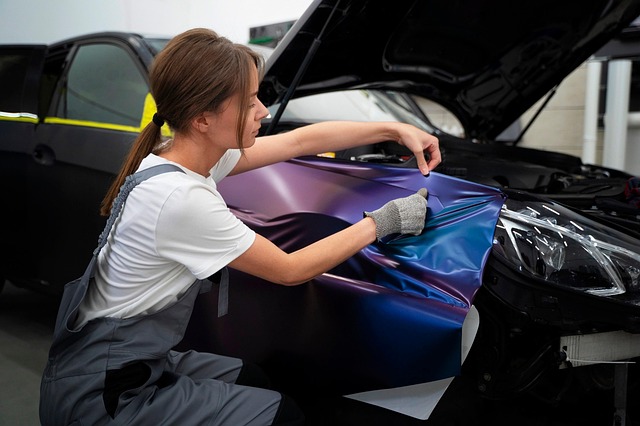When to Choose DIY Paint Repair and When to Consult a Technician
Small scratches and paint blemishes are a common nuisance for vehicle owners, and deciding whether to attempt a DIY repair or to consult a technician depends on several practical factors. Consider the depth of the damage, whether the clearcoat or basecoat is affected, paintmatch needs, and the tools and materials required. This article outlines how touchup, polishing, buffing, detailing, and restoration fit into typical maintenance decisions and where professional help is warranted.

How deep is the vehicle paint damage?
Assessing how deep a scratch goes is the first step in deciding between DIY and professional repair. Surface scratches that only affect the clearcoat can often be addressed with polishing or a mild abrasive compound, while scratches that reach the basecoat or primer expose pigment and metal and typically require more involved restoration. If you can catch the scratch early and it does not catch your fingernail, DIY touchup and clearcoat products may be adequate. When substrate is exposed or there is rust developing, consult a technician to avoid further corrosion and structural issues.
Can a blemish be fixed with touchup or polishing?
Touchup paint and polishing are practical for small blemishes and chips, and they are accessible to many DIYers. Touchup kits and pens work best when you have an accurate paintmatch and apply thin layers to avoid buildup. Polishing compounds and scratch removers remove light swirl marks and superficial scratches by slightly abrading and re-leveling the clearcoat. Use care: over-polishing can thin the clearcoat and create visible halos. If the scratch is long, deep, or affects edges and contours, a trained technician will have the tools and experience for a consistent finish.
When is buffing and detailing enough?
Buffing and detailing are routine maintenance actions that restore gloss and reduce visible imperfections without repainting. Professional detailing often combines careful buffing, machine polishing, and protective coatings to revive the finish. For vehicles with minor swirl marks, oxidation, or dull clearcoat, a detailing session can deliver a significant visual improvement. However, buffing cannot fill deep gouges or correct mismatched color. If repeated buffing is needed to hide the same mark, or if layers of paint are required, seek a technician to discuss longer-term solutions like panel repair or repainting.
Does restoration or repainting apply?
Restoration or partial repainting becomes necessary when damage extends beyond cosmetic layers or when multiple adjacent panels are affected. Technicians can perform panel-level repairs, color blending, and full resprays to restore factory appearance and maintain resale value. Restoration work also addresses underlying issues such as rust, dents, or fractured clearcoat. These jobs require controlled environments, paint booths, and professional-grade coatings to ensure adhesion and longevity. For vehicles with complex finishes, metallic flakes, or multi-stage coatings, leave the job to a qualified technician for a reliable paintmatch and finish.
How to ensure a paintmatch and choose ecofriendly materials?
An accurate paintmatch is crucial when using touchup paint or performing partial repainting. Most modern vehicles have a paint code on a placard; professionals use computerized color matching to blend basecoat and clearcoat precisely. If you prioritize ecofriendly options, ask about low-VOC formulations, waterborne basecoats, and sustainable materials—technicians and reputable suppliers can specify compliant coatings and disposal practices. DIYers should verify product safety data sheets and avoid diluted or unknown materials. For complex metallic or pearlescent finishes, professional mixing usually yields the best visual continuity.
What maintenance and diy precautions protect coatings?
Routine maintenance reduces the need for larger repairs: regular washing, careful drying, and avoiding abrasive cleaners keep the clearcoat in good condition. Use appropriate tools for polishing and buffing—clean pads, the right compound, and controlled machine speed reduce the risk of damage. When attempting DIY touchup, practice on a hidden surface, apply multiple thin coats, and allow proper curing between layers. If you lack the right environment, are unsure about paintmatch, or see signs of rust or delamination, consult local services or a technician to prevent escalating damage.
In summary, small, superficial blemishes and minor clearcoat scratches can often be addressed with careful DIY touchup, polishing, buffing, and regular detailing, especially when paintmatch and product choice are straightforward. Larger scratches that expose basecoat or metal, rust, complex color finishes, or structural damage are best evaluated and repaired by a technician with the right tools and controlled environment. Evaluate depth, finish complexity, and your comfort with materials and techniques before choosing the DIY route or professional restoration.






